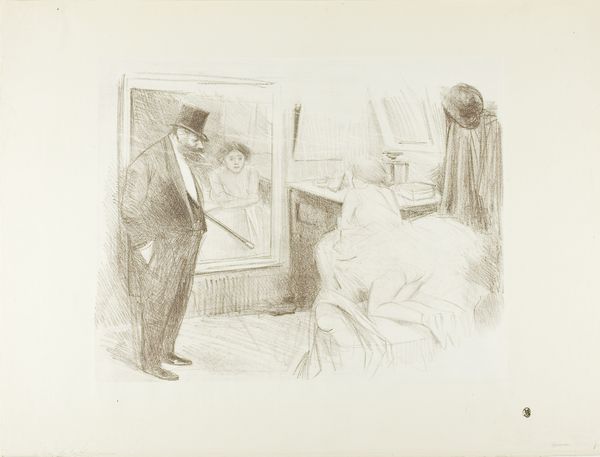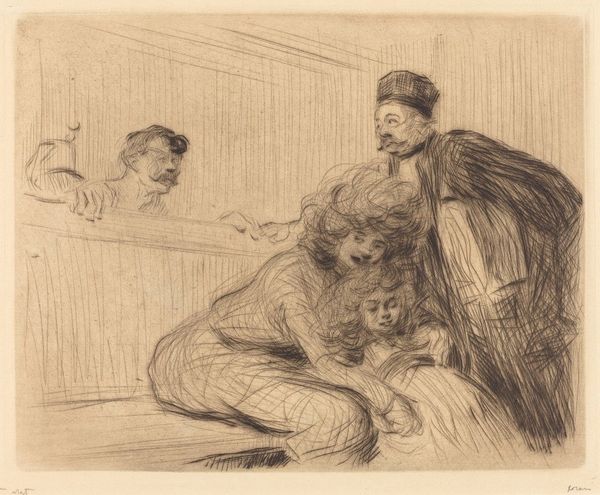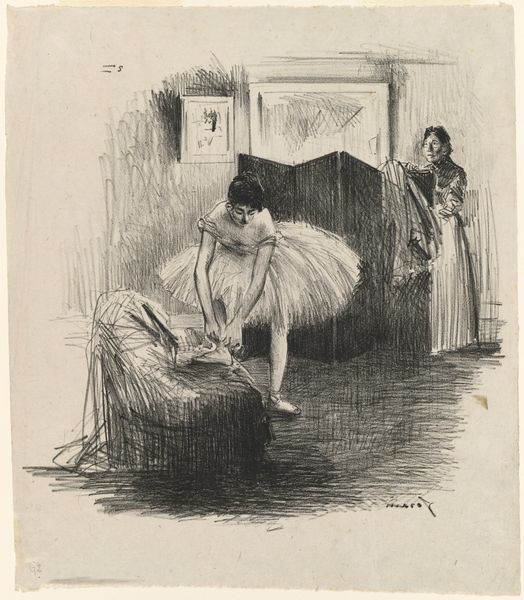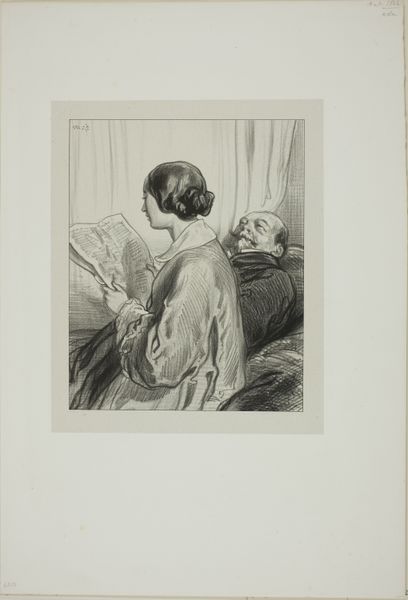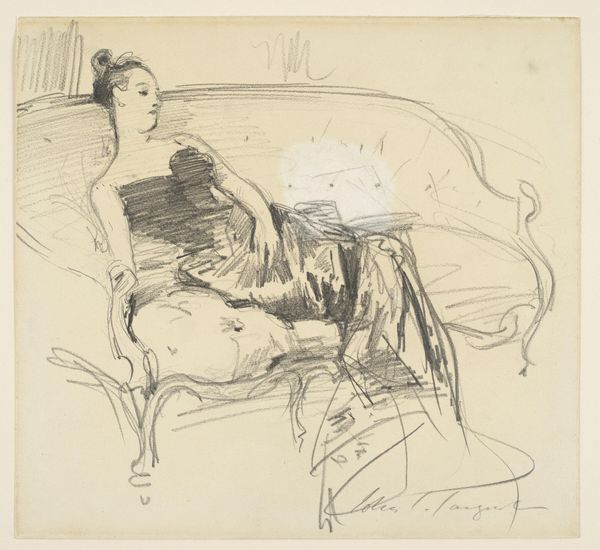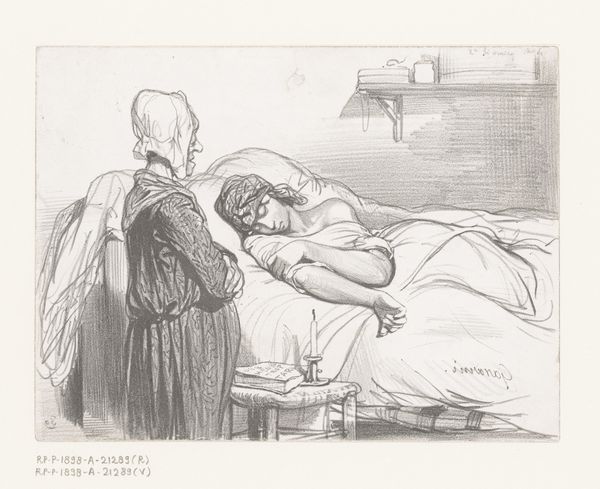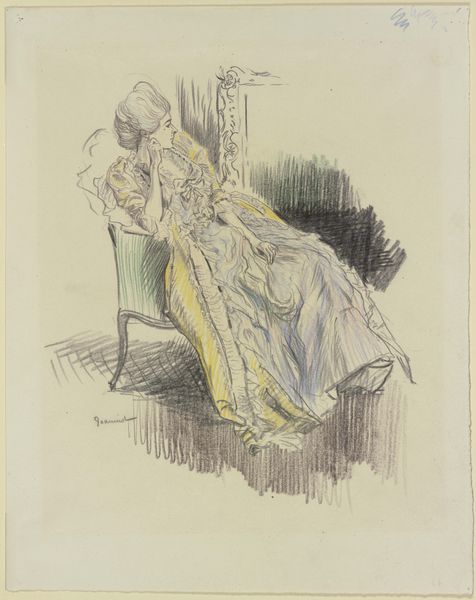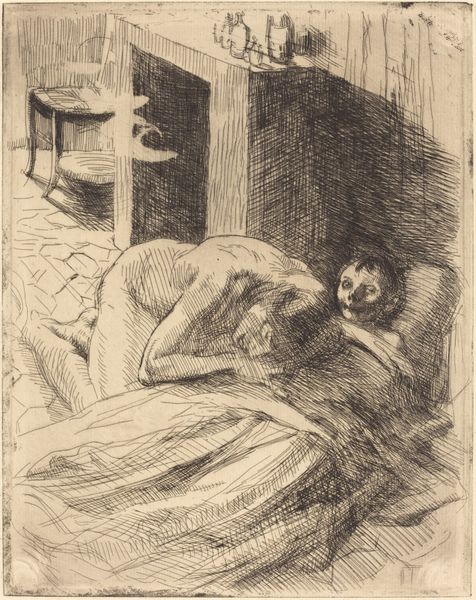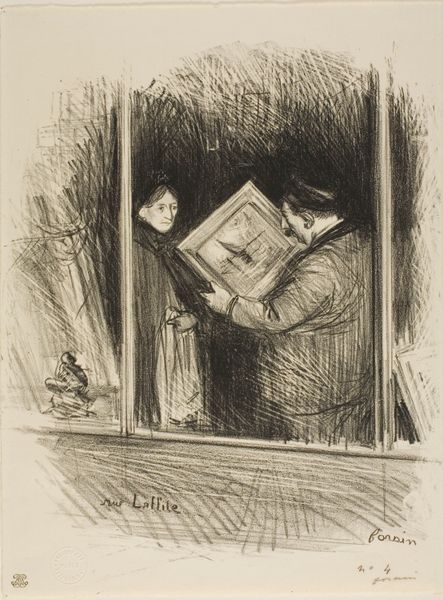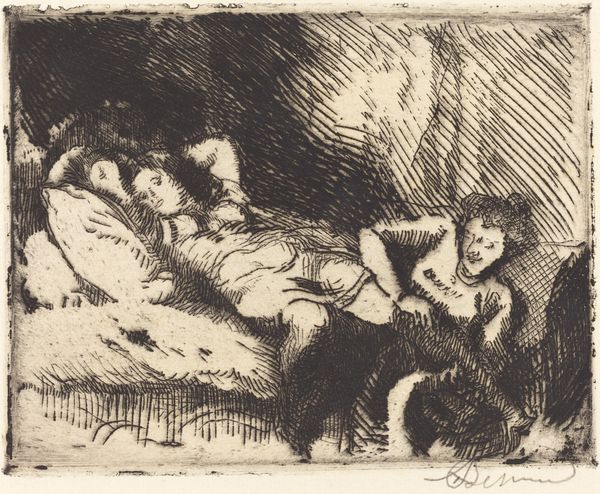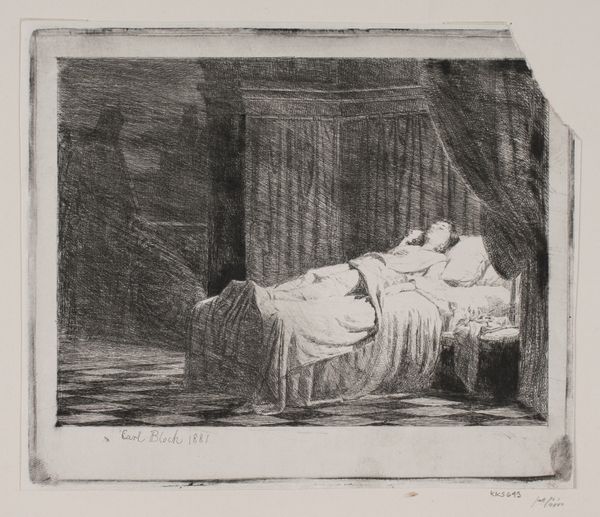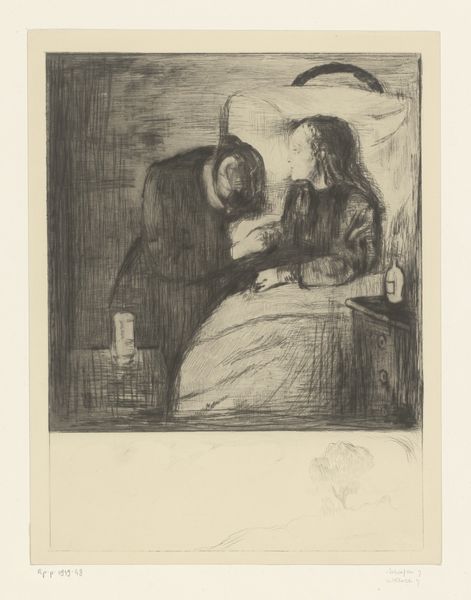
Dimensions: 295 × 383 mm (image); 382 × 526 mm (sheet)
Copyright: Public Domain
Curator: Let’s discuss Jean-Louis Forain's 1895 lithograph, "The Dancer's Dressing Room, First Plate," currently residing here at the Art Institute of Chicago. My immediate impression is how claustrophobic and full of anticipation the image feels. The nervous energy crackles off the page. Editor: An interesting sensation from such understated materials—the rough texture of the paper is clearly visible; one can sense the physical act of creation so viscerally. It's remarkable how the simple graphite translates the grimy labor required behind the scenes, of making illusions for the stage. Curator: Exactly. And there's this symbolic staging. The imposing figure of the gentleman, sharply defined and almost leering in contrast to the two women. What cultural narratives about power and spectatorship do you find playing out through this image? Editor: Well, I wonder if it's about production and its means? Look how the reflection positions the woman in her dressing gown in a way to create another face almost peeking around the mirror at the dancer—they are creating themselves for him, a service of sorts. Notice that his gaze, directed to her, completes the work. This reminds me, also, of the role of ballet in defining ideal body forms during this period—ballet normalized certain consumptive feminine body ideals that, of course, are anything but innocent. Curator: I hadn't quite seen it in that light, but that does highlight something unnerving about the almost parasitic dynamic displayed here. This composition reminds us of the pervasive male gaze dominating both the art world and the social world depicted within. Editor: The composition does highlight a certain complicity too: The paper here acts almost as a surface of reception that we both receive and, importantly, can change too. These images circulate now in the museum sphere where hopefully, different readings take hold and change how the dance plays out now in time. Curator: Indeed. Thank you; that perspective on the relationship between production, power and perception is fascinating. Editor: My pleasure. Seeing the artwork through the lens of materials and their impact offers us an exciting insight, don’t you think?
Comments
No comments
Be the first to comment and join the conversation on the ultimate creative platform.
